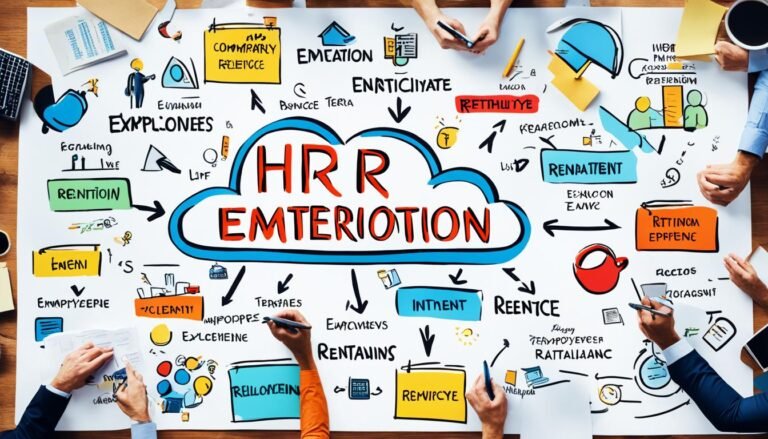The Impact of Employee Rights on Workplace Dynamics
As you navigate the intricacies of modern workplace dynamics, you may find yourself pondering the intricate interplay between employee rights and organizational effectiveness.
The influence of employee rights on workplace dynamics extends far beyond mere compliance; it shapes the very fabric of organizational culture and employee interactions.
Understanding this intricate relationship can provide valuable insights into enhancing employee engagement, fostering a positive work environment, and ultimately driving organizational success.
But what specific aspects of employee rights have the most significant impact on workplace dynamics, and how can organizations effectively navigate these complexities to guarantee a harmonious and productive work environment?
Key Takeaways
- Upholding employee rights fosters a positive work culture and values alignment.
- Compliance with labor laws enhances organizational success and employee well-being.
- Employee development, feedback, and conflict resolution improve workplace dynamics.
- Diversity, equity, and inclusion initiatives drive innovation and a sense of belonging.
Historical Evolution of Employee Rights
Throughout history, the evolution of employee rights has been influenced by societal shifts, labor movements, and legislative changes. Labor movements have played a pivotal role in advocating for improved working conditions and fair treatment of employees. These movements, driven by the social impact of industrialization and the need to address exploitation, have led to significant advancements in worker advocacy. Initiatives such as the fight for minimum wage, limits on working hours, and workplace safety regulations have all stemmed from the collective efforts of labor movements.
Worker advocacy has been a driving force behind policy changes that have shaped employee rights. Policies such as anti-discrimination laws, paid leave entitlements, and healthcare benefits have all been a result of continuous advocacy for fair treatment and equality in the workplace. These policy changes not only reflect societal values and norms but also serve to protect the rights and well-being of employees. The historical evolution of employee rights underscores the ongoing need for vigilance in ensuring that workers are respected, protected, and fairly compensated.
Legal Framework and Compliance Requirements
You must guarantee that your organization complies with all relevant laws and obligations to protect the rights of your employees.
Implementing regulatory compliance measures is vital to maintain a fair and ethical workplace environment.
Understanding the legal framework and compliance requirements is essential for fostering a positive and lawful work culture.
Laws and Obligations
In traversing the complex landscape of employee rights and workplace dynamics, understanding the legal framework and compliance requirements is paramount for both employers and employees. Workplace discrimination laws aim to protect employees from unfair treatment based on characteristics such as race, gender, or disability. Employers must adhere to these laws to guarantee a fair and inclusive work environment.
Additionally, labor unions play an essential role in advocating for employees' rights and negotiating collective bargaining agreements with employers. Understanding the obligations set forth by these laws is essential for maintaining a harmonious workplace and avoiding legal repercussions.
Regulatory Compliance Measures
Understanding regulatory compliance measures in the workplace requires a meticulous grasp of the legal framework and strict adherence to compliance requirements. Compliance challenges can arise due to the ever-evolving nature of labor laws and regulations. Employing technology solutions can streamline compliance processes, enhance monitoring capabilities, and mitigate risks. Employee advocacy plays a vital role in ensuring that compliance measures are fair and transparent. Collective bargaining can be a strategic approach to address compliance issues collectively. By fostering a culture of compliance, organizations can proactively tackle challenges and foster a harmonious work environment. The table below summarizes key aspects related to regulatory compliance measures.
| Aspect | Description |
|---|---|
| Compliance Challenges | Ever-evolving labor laws and regulations can pose challenges for organizations. |
| Technology Solutions | Utilizing technology can streamline compliance processes, enhance monitoring, and reduce risks. |
| Employee Advocacy | Employees advocating for fair and transparent compliance measures play a vital role in the process. |
| Collective Bargaining | Collective bargaining can be a strategic approach to address compliance issues collectively. |
Impact on Organizational Culture and Values
As you navigate the impact of employee rights on organizational culture and values, it's essential to contemplate values alignment and cultural diversity within your workplace.
Ensuring that your organization's core values are reflected in its practices can foster a cohesive and inclusive environment.
Embracing cultural diversity can lead to innovation, creativity, and a more dynamic organizational culture.
Values Alignment
Values alignment plays an important role in shaping an organization's culture and reinforcing its core values. When employees' personal values align with those of the organization, it leads to increased job satisfaction, engagement, and commitment. This alignment is vital for organizational success as it fosters a cohesive work environment where everyone is working towards common goals. By ensuring that employees' beliefs and behaviors are in sync with the company's values, businesses can enhance productivity and overall performance. Here is a table highlighting the key aspects of values alignment:
| Aspects | Importance |
|---|---|
| Employee Satisfaction | High |
| Organizational Success | Critical |
| Employee Engagement | Significant |
| Workplace Culture | Central |
| Performance | Positively Impacted |
Cultural Diversity
The presence of cultural diversity within an organization greatly influences its overall values and organizational culture. Embracing diversity fosters a more inclusive and innovative environment, shaping the following aspects of organizational culture and values:
- Guarantee initiatives: Cultural diversity encourages the implementation of guarantee initiatives that guarantee fairness and equal opportunities for all employees.
- Inclusive practices: Embracing cultural diversity promotes inclusive practices that value and respect differences among employees.
- Enhanced creativity: Different cultural perspectives lead to a more creative and dynamic work environment, driving innovation and problem-solving.
- Global mindset: Cultural diversity cultivates a global mindset within the organization, enabling better adaptation to diverse markets and customers.
Employee Engagement and Motivation Levels
Employee engagement and motivation play pivotal roles in shaping a productive and positive workplace culture. When employees feel valued and appreciated through mechanisms like employee recognition programs, their commitment and enthusiasm towards their work increase.
Implementing team building activities fosters collaboration, trust, and a sense of belonging among employees, further enhancing their engagement levels. High levels of engagement lead to increased productivity, lower turnover rates, and a more cohesive work environment.
To maintain motivation levels, it's essential for organizations to provide opportunities for growth and development, set clear goals and expectations, and offer regular feedback and recognition for achievements. Employees are more likely to stay motivated when they see a clear path for advancement and feel that their contributions are acknowledged and valued.
Conflict Resolution and Grievance Procedures
When addressing conflict resolution and grievance procedures in the workplace, it's crucial to emphasize effective grievance handling and mediation techniques.
These strategies are pivotal in maintaining a harmonious work environment and fostering healthy employee relations.
Effective Grievance Handling
In order to maintain a harmonious work environment, mastering effective grievance handling techniques is essential for addressing conflicts and concerns promptly and fairly.
When handling grievances, it's vital to guarantee impartial investigations are conducted to gather all relevant information.
Here are some key strategies for effective grievance handling:
- Encourage Open Communication: Create a culture where employees feel comfortable expressing their grievances.
- Establish Clear Procedures: Outline transparent steps for reporting and addressing grievances.
- Train Management and HR: Provide training on conflict resolution and grievance handling techniques.
- Monitor and Review: Regularly review grievance procedures to identify areas for improvement and make sure fair resolutions are consistently achieved.
Mediation for Conflicts
Encouraging the use of mediation as a proactive conflict resolution tool can greatly enhance grievance procedures in the workplace. Conflict resolution plays an essential role in maintaining positive team dynamics. By implementing mediation techniques, employees can address issues constructively, fostering better communication and understanding among team members.
This approach not only resolves conflicts efficiently but also promotes employee satisfaction and contributes to overall workplace harmony. Mediation provides a structured process for parties to express their concerns, listen to each other's perspectives, and work towards mutually beneficial solutions.
Emphasizing mediation in conflict resolution strategies demonstrates a commitment to fair and respectful treatment of employees, ultimately leading to improved relationships, increased productivity, and a more positive work environment.
Diversity, Equity, and Inclusion Initiatives
Implementing diversity, equity, and inclusion initiatives within the workplace is essential for fostering a culture of belonging and respect among employees. These initiatives not only enhance employee morale but also contribute to increased innovation and productivity.
Here are some key components to contemplate when implementing diversity, equity, and inclusion initiatives:
- Diversity Training: Providing employees with training on diversity helps raise awareness about different backgrounds, perspectives, and experiences, fostering a more inclusive environment.
- Inclusion Initiatives: Actively promoting inclusivity through initiatives such as employee resource groups or mentorship programs can help employees feel valued and respected.
- Regular Feedback Mechanisms: Establishing feedback channels where employees can express concerns or suggestions regarding diversity and inclusion can help tailor initiatives to better suit the workforce.
- Leadership Commitment: It's critical for organizational leaders to demonstrate a strong commitment to diversity, equity, and inclusion through their actions and decisions, setting the tone for the entire workplace.
Training and Development Opportunities
To enhance employee skills and performance, consider strategic training and development opportunities within the workplace. Investing in skill development not only benefits the individual employees but also contributes to the overall success of the organization. By providing avenues for career progression, you can boost talent retention and increase employee satisfaction. Here is a table outlining the key aspects of training and development opportunities:
| Benefits | Impact |
|---|---|
| Skill Development | Enhances Employee Performance |
| Career Progression | Motivates Growth |
| Talent Retention | Reduces Turnover Rates |
| Employee Satisfaction | Boosts Morale |
Performance Evaluation and Feedback Mechanisms
Consider how the performance evaluation and feedback mechanisms in your workplace can drive continuous improvement and enhance employee engagement. Establishing a robust feedback culture fosters an environment where employees feel valued and motivated to excel.
Here's how you can leverage performance evaluations effectively:
- Regular Feedback Sessions: Conduct frequent one-on-one feedback sessions to provide constructive criticism and praise where due.
- Goal Setting and Progress Tracking: Set clear performance goals aligned with organizational objectives to encourage a growth mindset and track progress consistently.
- 360-Degree Feedback Mechanisms: Implement a system where feedback comes from peers, subordinates, and supervisors to gain a holistic view of performance.
- Training on Giving and Receiving Feedback: Offer training on how to deliver feedback effectively and encourage employees to be open to receiving feedback for mutual growth.
Balancing Rights With Organizational Needs
Balancing employee rights with organizational needs requires a nuanced approach that prioritizes mutual respect and alignment towards common goals. In today's dynamic work environment, organizations must navigate the delicate balance between upholding employee rights and meeting operational demands effectively. This balance often involves weighing rights versus productivity and considering how employee satisfaction aligns with organizational goals.
To illustrate this delicate balance, consider the following table:
| Rights vs. Productivity | Employee Satisfaction vs. Organizational Goals |
|---|---|
| Ensuring fair treatment | Aligning individual goals with company objectives |
| Providing a safe work environment | Recognizing and rewarding employee contributions |
| Respecting privacy rights | Offering professional development opportunities |
| Accommodating diverse needs | Fostering a collaborative and inclusive culture |
Future Trends and Implications
Future workplace dynamics are being shaped by emerging trends that carry significant implications for both employees and organizations. These trends are influencing how work is conducted, where it takes place, and the skills required in the workplace. Here are some key future trends and their implications:
- Technology Advancements, Automation: The integration of artificial intelligence, machine learning, and automation is revolutionizing industries. This trend will lead to the creation of new job roles that require a different skill set, impacting how organizations operate and employees perform their tasks.
- Remote Work, Flexibility: The rise of remote work and flexible work arrangements is changing the traditional office setting. This shift towards virtual collaboration and telecommuting presents opportunities for increased work-life balance but also challenges in maintaining team cohesion and communication.
- Augmented Reality, Virtual Reality: The adoption of AR and VR technologies in the workplace is enhancing training programs, improving customer experiences, and transforming how tasks are completed. Organizations need to adapt to these technological advancements to stay competitive in the market.
- Data Privacy, Security: With the increasing amount of data being generated and shared, ensuring data privacy and security is vital. Organizations must invest in robust cybersecurity measures and compliance protocols to protect sensitive information and maintain trust with employees and customers.
Frequently Asked Questions
How Do Employee Rights Impact the Overall Reputation and Branding of a Company?
When you prioritize employee rights, morale improves, leading to a positive company culture. This fosters trust, loyalty, and productivity among employees. Ultimately, it enhances your company's reputation and branding, attracting top talent and building a strong organizational image.
What Role Do Employee Rights Play in Attracting and Retaining Top Talent in a Competitive Market?
Employee rights are important in attracting and retaining top talent. When you prioritize employee satisfaction through fair treatment, benefits, and a supportive environment, you create a workplace where talented individuals want to stay and contribute long-term.
How Do Employee Rights Influence the Decision-Making Process Within an Organization?
Employee autonomy is essential for informed decisions within an organization. Ensuring employees' rights are respected can lead to a more transparent and collaborative decision-making process, fostering a positive work environment and enhancing overall productivity.
Can Employee Rights Lead to Potential Conflicts Between Different Departments or Levels of Hierarchy Within a Company?
When employee rights clash, interdepartmental conflicts can arise, leading to hierarchy disagreements. Managing these tensions requires proactive communication, clear policies, and a commitment to fair resolutions to prevent disruptions in the workplace dynamics.
What Are the Potential Challenges and Drawbacks of Implementing Extensive Employee Rights Policies in the Workplace?
When implementing extensive employee rights policies, challenges may arise in maintaining workplace balance. Aim for employee autonomy while considering potential drawbacks like increased bureaucracy and conflicts. Carefully navigate these factors to foster a harmonious work environment.
Conclusion
To summarize, embracing and upholding employee rights in the workplace isn't just a legal obligation, but a strategic imperative for fostering a positive and productive work environment.
By valuing and respecting the rights of your employees, you aren't only ensuring compliance with regulations, but also nurturing a culture of trust, respect, and fairness.
This commitment will ultimately lead to increased employee engagement, motivation, and overall organizational success.







